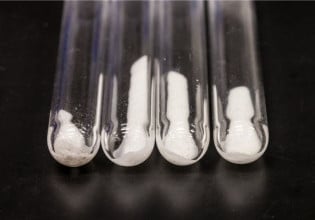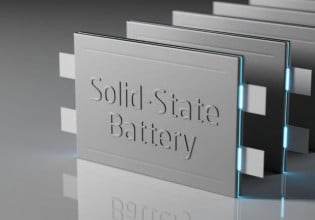Estonian Pumped-hydro Storage Project Gets Green Light
Energiasalv gets the go-ahead for constructing a large-scale pumped-hydro energy storage project in Estonia, Zero Terrain.
Sustainability-focused energy storage project operator, Energiasalv, has received an official permit to continue with the construction of a 550-megawatt underground pumped-hydro energy storage facility in Paldiski, Estonia. Energiasalv’s energy storage technology should reduce the cost of electricity for households and businesses, providing energy when solar and wind are unavailable.
Zero Terrain is set to bolster the European Union’s (EU) energy system infrastructure as a high-priority project, marking it as an EU Project of Common Interest. Investors behind the project include Sunly AS, Alexela, and Vool OÜ. Energiasalv has also received EU support through the Connecting Europe Facility.

Water pumped through pipes from a lower to higher elevation for storage can be released to generate power. Image used courtesy of Pixabay
Pumped Storage Hydroelectricity
Pumped storage hydroelectricity (PSH) uses excess electricity to pump water from a lower reservoir to an upper reservoir and then releases it back through a turbine generator. This process allows for the generation of electricity. It is considered one of the most efficient, cost-effective, and reliable methods of storing renewable energy.
Pumped-hydro energy storage or PSH facilities provide a reliable source of stored electricity, reduce greenhouse gas emissions, and allow for more efficient use of renewable resources such as solar or wind. They also help to stabilize the electrical grid by providing a buffer against fluctuations in demand or supply. In addition, they can be used to store excess electricity during periods when abundant renewable energy is available and release it when less is available.
Zero Terrain Technology
Despite the benefits of PSH, it can be limited by the need for suitable mountain ranges for the system to work. Typically, PSH works by pumping water from its source up a mountain to a reservoir area for storage. On release, the stored water runs down the same pipe systems used to get it to the reservoir and spins a turbine, generating electricity.

A schematic representing the general structure and mode of operation of Energiasalv’s Zero Terrain pumped-hydro storage solution. Image used courtesy of Energiasalv
Energiasalv’s geotechnical pumped-hydro storage solution differs from conventional PSH in that it does not require specific geographical features such as mountains or large rivers to be used.
The Zero Terrain technology involves situating lower reservoirs of the pumped storage facilities within the Earth’s crust and using bodies of water on the Earth’s surface as the upper reservoirs of the facilities. Creating a below-ground reservoir minimizes environmental damage and other impacts concerning land use.
The Pumped-hydro Storage Project
The Estonian Pumped-Hydro Energy Storage project is expected to provide 6 gigawatt-hours of storage capacity for renewables following a single operating cycle of 12 hours. Energy will be generated by pumping water into Paldiski Bay from underground reservoirs.
According to Energiasalv, the project’s power output is just above Estonian homes' average daily electricity consumption. The project is expected to provide 450 direct jobs, reduce power generation costs by 50 million euros, and reduce carbon dioxide emissions by 16 million tons.
With all of the paperwork in order, the procurement process for the storage project can begin, with completion expected in 2023. Construction of the project is planned to commence in the summer of 2024.






